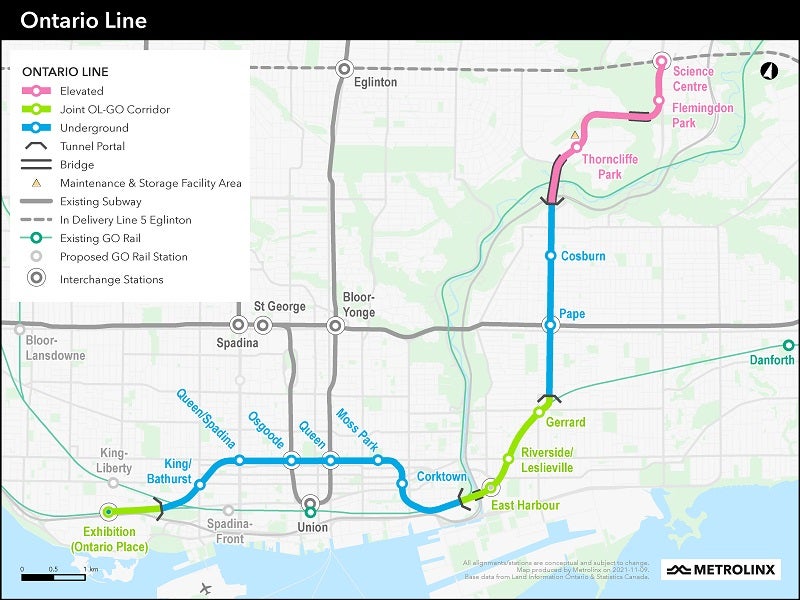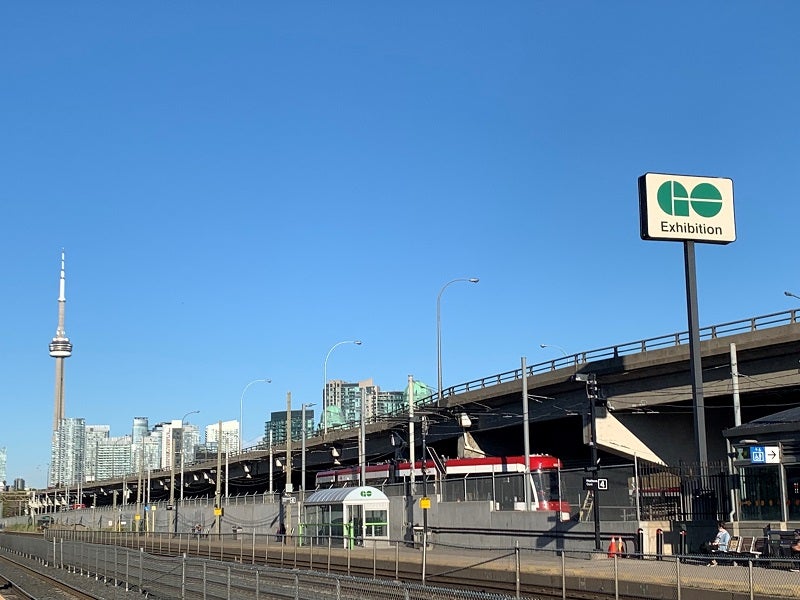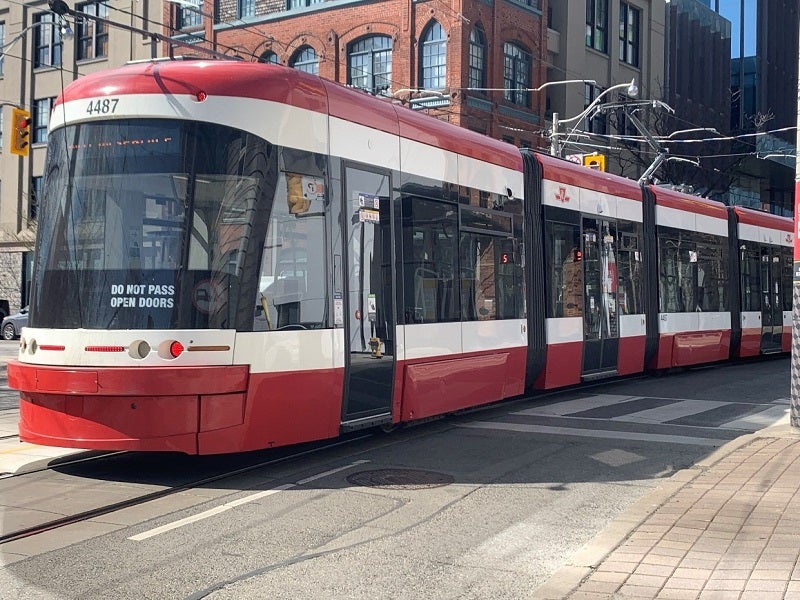Metrolinx’s Ontario line is a new, stand-alone, rapid transit line being proposed in Toronto, the capital of the province of Ontario, Canada.
Announced in 2019, the new subway line will run between Exhibition Place, in the southwest of the city, and the Ontario Science Centre in the northeast.
The project is being implemented by Infrastructure Ontario (IO) and Metrolinx, with an estimated investment of approximately C$10.9bn ($8.56bn).
Construction of the project is expected to begin in 2022 while completion is expected in 2030.
The Ontario line is among four high-priority transit projects in the Greater Toronto and Hamilton Area. The other three projects include the Yonge Street North subway extension, the Scarborough subway extension, and the Eglinton Crosstown West extension.
The line will be the largest single subway expansion in Toronto. The project is expected to reduce congestion on the existing transit lines across Toronto, and expand the line to underserved communities.
Ontario line development background
The Ontario government announced that the tenders for the Ontario line subway project would be awarded through three separate requests for qualifications (RFQs), in June 2020.
IO and Metrolinx released the first two RFQs for the rolling stock, systems, operations, and maintenance for the entire Ontario line, as well as the southern civil work, stations, and tunnel, in June 2020. The requests for proposal (RFPs) for the two contracts were issued in December 2020. The third RFQ covering the northern civil work, stations, and tunnel is expected to be issued in 2022.
The scope of work under the project component covering the southern part of the line includes construction works from Exhibition/Ontario Place to the Don Yard portal. The RFQ calls for the construction of a 6km-long tunnel, four new underground stations, including King/Bathurst, Moss Park, Queen/Spadina, and Corktown, an above-ground station which will be integrated with the existing GO Transit Exhibition Station, and two underground stations which will be integrated with the existing Toronto Transit Commission’s (TTC) Osgoode, and Queen subway stations.
The contract for the northern portion is expected to include the section between Gerrard Station and the Ontario Science Centre. The scope of work under the RFQ will include a 3km-long tunnel, seven stations, two portals, as well as associated approach components, bridges, and guideways.
Details of Metrolinx’s Ontario Line
The 15.6km-long Ontario line will include 15 stations, six interchange stations, and more than 40 new connections to GO railway lines, as well as existing streetcar, subway, and bus lines. It will also feature passenger pick-up and drop off areas.
A combination of at-grade, underground, and elevated tracks will be used for the line to improve accessibility for neighbourhoods such as Thorncliffe Park, Flemingdon Park, Liberty Village, and Fort York. More than half of the line is planned to be underground, via new tunnels.
The railway line will connect to the GO train service (Lakeshore East and West), TTC’s subway line one and line two, Eglinton Crosstown LRT (line five), as well as the King, Harbourfront, Queen, Spadina, Bathurst, and Gerrard streetcar lines.
The line is estimated to have a ridership of 388,000 a day, and peak hour frequency of 90 seconds. A maintenance and storage facility for the subway vehicles will also be built as part of the project.
Benefits of the Ontario line
The new Ontario line will enable faster, more frequent, and reliable transit to more communities. More than 255,000 persons are projected to live within a 10-minute walk of the line.
The project is expected to reduce congestion at Bloor/Yonge station by 22%, by 16% at Eglinton station, and congestion at Union station by 14%.
The line is estimated to take 28,000 cars off the road. The journey time between Exhibition Place and Ontario Science Centre is expected to be less than 30 minutes.
The maintenance and storage facility will generate up to 300 new jobs in the area.
Contractors involved
Bechtel, a US-based engineering, construction, and project management company, was appointed as the delivery partner for the project. The company, together with sub-contractors Bantrel, and Comtech Group, will support the preparation for the construction of the rapid transit line by providing resources and knowledge.
HDR was selected as technical advisory services provider for the Ontario line subway project. The company will provide planning, engineering, environmental, design, and construction supervision services, with support from partners including Stantec, Systra, Mott MacDonald, and Comtech. It will be responsible for managing procurement and overseeing the three contract packages.
The 360 Transit Alliance joint venture, comprising Stantec and Jacobs, was awarded the programme control services contract for all the four high-priority transit projects, including the Ontario line, in the Greater Toronto and Hamilton Area.






